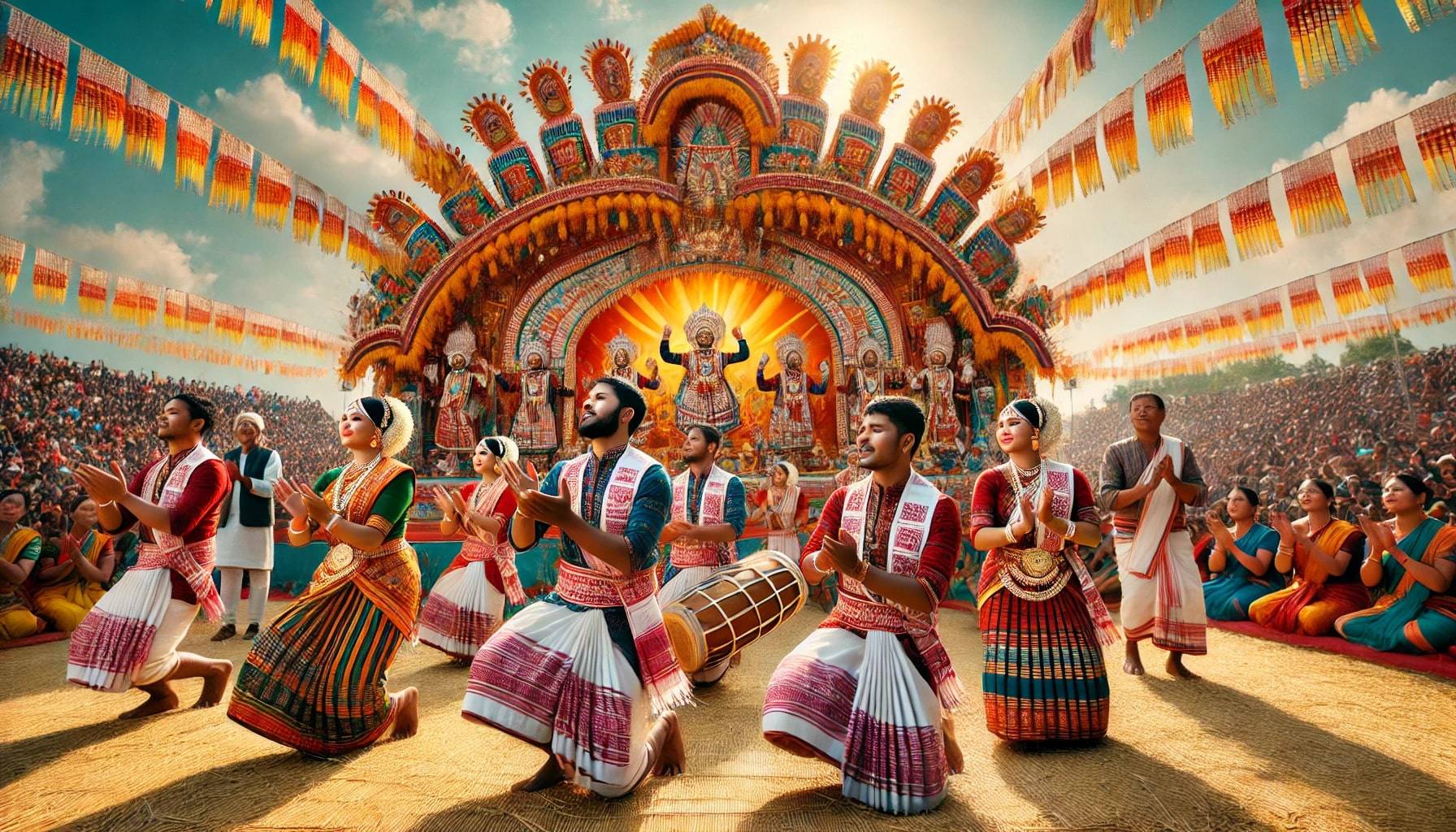


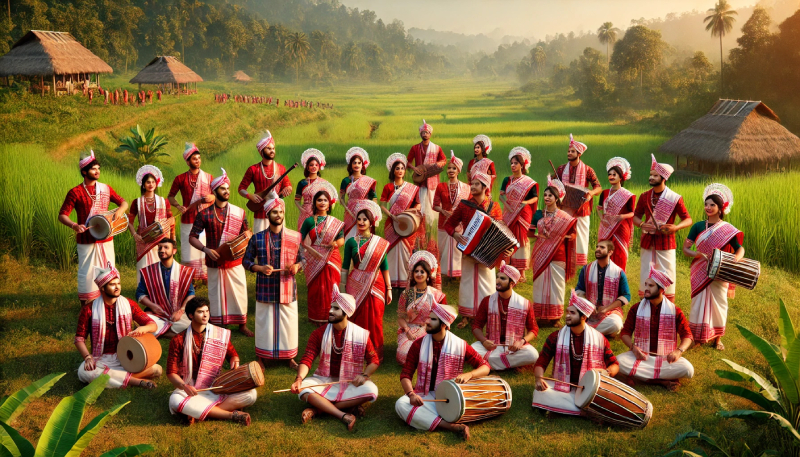
Rongali Bihu
Celebrated in April, Rongali Bihu marks the Assamese New Year with vibrant dances, songs, and feasts, symbolizing joy and prosperity.
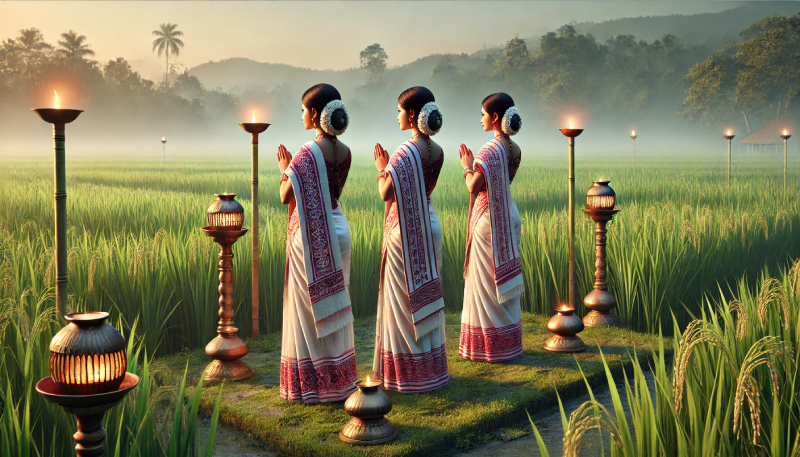
Kati Bihu
Observed in October, Kati Bihu focuses on prayers for a good harvest, with families lighting earthen lamps and performing rituals in paddy fields.
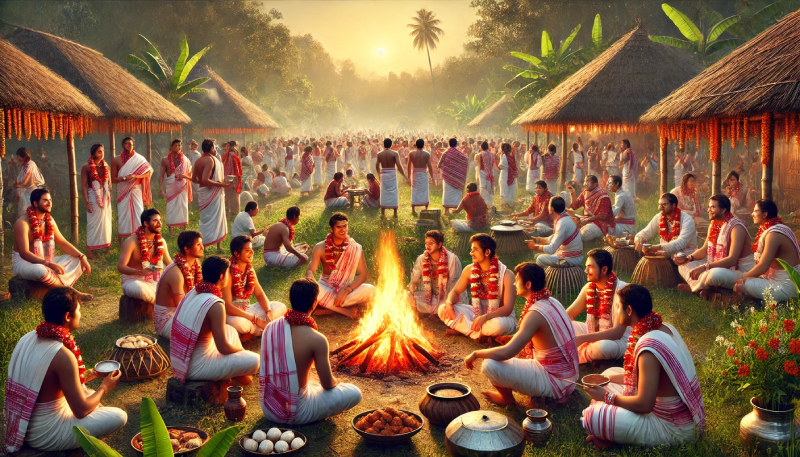
Magh Bihu
Celebrated in January, Bhogali Bihu is a festival of feasting and merriment, marking the end of the harvest season with traditional community feasts and bonfires.
Assamese New Year
Bihu is the most significant festival in Assam, celebrated with great enthusiasm and spirit. It marks the agricultural cycle and the change of seasons, deeply rooted in the cultural heritage of the Assamese people. There are three Bihus celebrated throughout the year: Rongali Bihu in April, Kati Bihu in October, and Magh Bihu in January. Rongali Bihu, also known as Bohag Bihu, is the most vibrant of the three and celebrates the Assamese New Year and the onset of spring. People dress in traditional attire, sing and dance to the beats of drums and flutes, and prepare traditional foods like pitha and laru, symbolizing joy, prosperity, and hope for a bountiful harvest.
Kati Bihu, known as Kongali Bihu, is more solemn and focused on prayers for a good harvest, with rituals like lighting lamps in fields. Magh Bihu, or Bhogali Bihu, celebrates the completion of the harvest with community feasts and bonfires. People build meji (temporary huts) and burn them at dawn, symbolizing the end of the harvest season. Bihu transcends religious and social boundaries, uniting people through music, dance, and food, reflecting Assam’s strong agrarian roots and communal spirit. It remains a vital link between the past and present for Assamese culture.
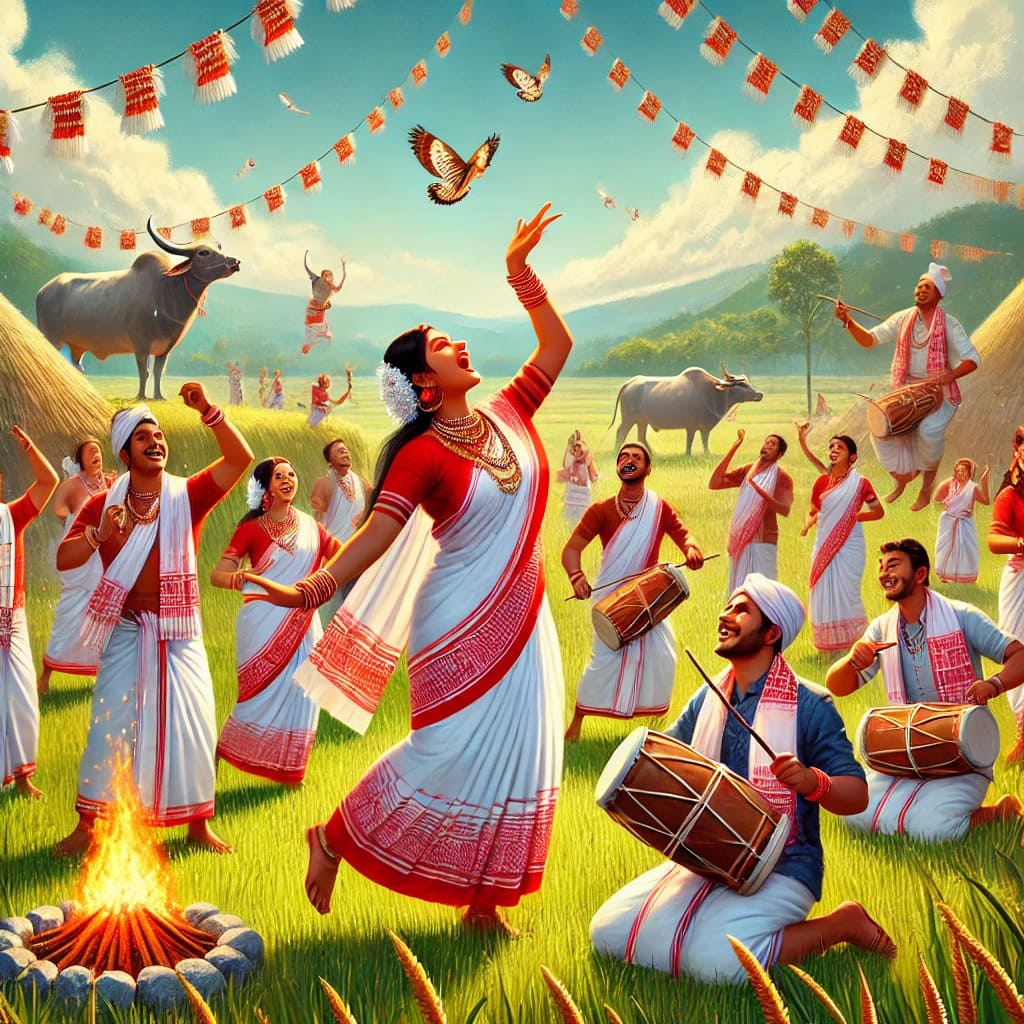

Let’s unite to preserve the rich heritage of Assam for future generations.